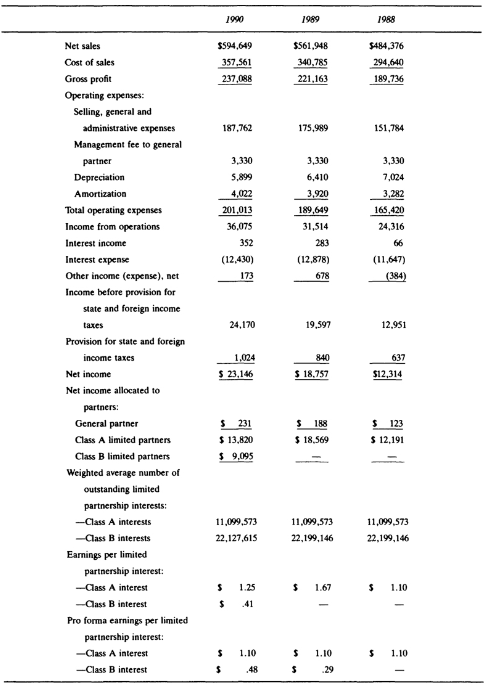casestudyguru.com
Home About
Peter Lynch
Sun Distributors
1991-1993
Industry: Autoparts and Glass
Category: Special Situation
Context
Sun Distributors is a roll-up of 36 auto parts and glass companies.
The business is profitable,
has the highest gross profit in the industry (implying it's a low cost operator),
and requires little maintenance capex.
Why the Company is Mispriced
Sun Distributors is set up as a Master Limited Partnership (MLP).
In exchange for distributing all of it's earnings directly to shareholders as a dividend,
the company does not have to pay taxes on a certain percentage of it's distributions.
MLPs are unpopular because it reminds people of the LP boondoggles of the past.
Often the tax advantage feature was used as a sales tool to sell bad assets.
The combination of the association with LPs and an additional tax form dissuaded many from MLPs.
Sun Distributors also had a complicated capital structure - it had 2 classes of shares, A and B.
Class A has a big dividend and management are required to eventually buyback the shares at $10. The Class A shares trade for $10/sh.
Class B has no dividend, but are entitled to the remaining value of the company after all the Class A shares are bought back. The Class B trade for $2/sh.
Finally, the company had intangible amortization from it's acquisitions, creating a large discrepancy between the company's reported earnings and FCF.
Alternative View
According to changes in laws, all non-real estate and mining MLPs must be closed out by 1997-1998. Starting 1998, MLPs will no longer be tax advantaged.
Therefore, the entire enterprise may be sold off in 1997.
When the enterprise is sold off, Class A shares receive $10/sh.
Class B shares receive the remaining value. Lynch estimates this value to be $5-8/sh.
Management is highly incentivized to realize this value since Shearson Lehman owns 52% of the Class B shares,
and management has an option to buy 1/2 of the 52% at a fixed price.
Furthermore, alll FCF resulting from acquisition amortization ultimately flows into Class B's intrinsic value, not the Class A dividend.
Lynch estimated that the company was theoretically bringing in $1/sh in FCF to the Class B's intrinsic value.
In summary, Class B shares were trading at $2/sh, shareholders should receive $5-8/sh by 1997, and that intrinsic value grows by $1/sh every year.
Result
In 1993, management announced it's plan to sell various divisions.
This moved the class B share price to $4.4/sh, a 120% return, or a 30% CAGR.
Lynch felt that the company was premature in selling it's assets, that it would've been better off delaying until 1997.
